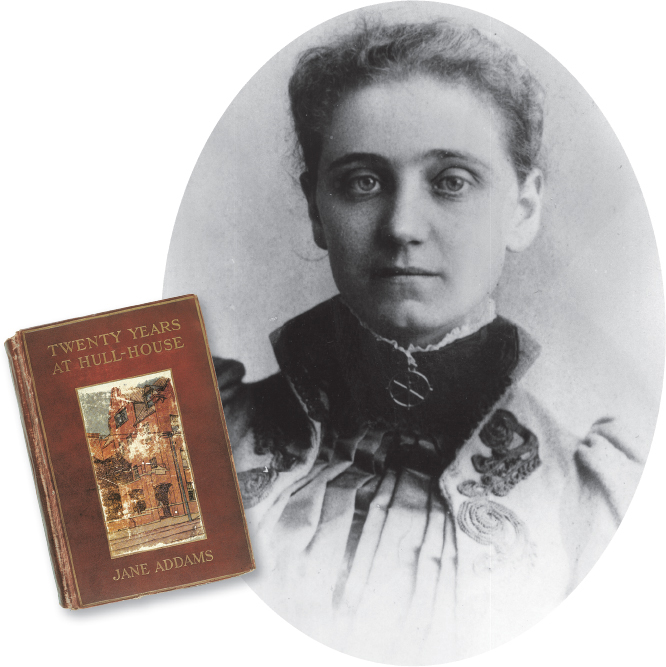How did grassroots progressives attack the problems of industrial America?
Printed Page 612

AS THE GAP BETWEEN RICH and poor widened in the 1890s, a group of reformers demonstrated a willingness to use the government to counterbalance the power of private interests and in doing so redefined liberalism in the twentieth century. Faith in activism united an otherwise diverse group of progressive reformers. A sense of Christian mission inspired some. Others, fearing social upheaval, sought to remove some of the worst evils of urban industrialism — tenements, child labor, and harsh working conditions.
Much of progressive reform began at the grassroots level and percolated upward into local, state, and eventually national politics as reformers attacked the social problems fostered by urban industrialism. Although progressivism flourished in many different settings across the country, urban problems inspired the progressives’ greatest efforts. In their zeal to “civilize the city,” reformers founded settlement houses, professed a new Christian social gospel, and campaigned against vice and crime in the name of “social purity.” Allying with the working class, women progressives sought to better the lot of sweatshop garment workers and to end child labor. These local reform efforts often ended up being debated in state legislatures and in the U.S. Congress.
CHRONOLOGY
1889
- – Jane Addams opens Hull House in Chicago.
1893
- – Lillian Wald opens Henry Street settlement house in New York.
1903
- – Women’s Trade Union League (WTUL) is founded.
1908
- – Muller v. Oregon.
1909
- – Garment workers’ strike.
1911
- – Triangle fire.
progressivism
 A reform movement that often advocated government activism to mitigate the problems created by urban industrialism. Progressivism reached its peak in 1912 with the creation of the Progressive Party. The term progressivism has come to mean any general effort advocating for social welfare programs.
A reform movement that often advocated government activism to mitigate the problems created by urban industrialism. Progressivism reached its peak in 1912 with the creation of the Progressive Party. The term progressivism has come to mean any general effort advocating for social welfare programs.
CHAPTER LOCATOR
How did grassroots progressives attack the problems of industrial America?
What were the key tenets of progressive theory?
How did Theodore Roosevelt advance the progressive agenda?
How did progressivism evolve during Woodrow Wilson’s first term?
What were the limits of progressive reform?
Conclusion: How did the liberal state transform during the Progressive Era?
 LearningCurve
LearningCurve
Check what you know.
bedfordstmartins.com/roarkunderstanding